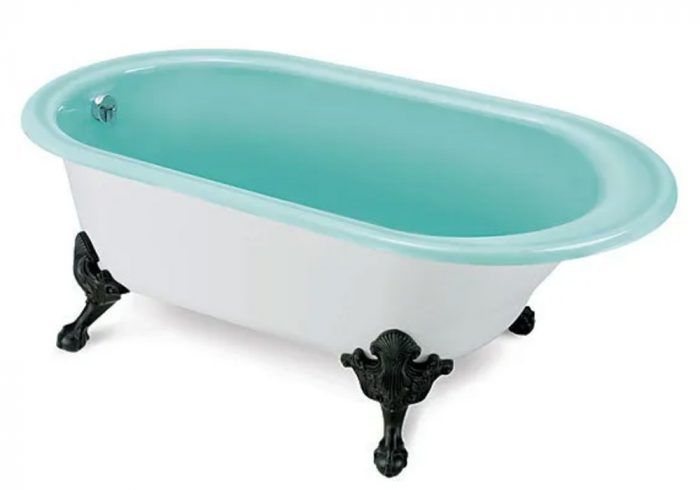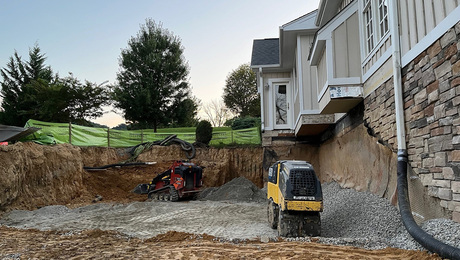
Admit it. Whenever you see a photo of a bathroom, you envision what it’d be like to take a long soak in the tub. As the room’s largest fixture, the bathtub heavily influences both the style and the functionality of the space. Tubs are available in a vast array of sizes and styles, so sorting through the hundreds if not thousands of options can quickly become overwhelming. To help narrow the field, start by considering the material that the tub is made of. While there are certainly bathtubs made of materials other than plastic, porcelain on steel, or cast iron, these are the most common and the most budget friendly.
Plastic
This category encompasses acrylic and fiberglass tubs, which have some performance differences and similarities. Both materials are easy to mold, so they allow manufacturers to create unique and varied tub shapes and sizes. Acrylic tubs are slightly easier to maintain because their color is uniform throughout, whereas fiberglass tubs have a gel coat that displays scratches more clearly.
PRO
• Lightweight and easy to install.
• One of the least expensive types of tub available.
• Available in a wide range of sizes and styles.
• Acrylic tubs won’t fade in color and are easy to repair if scratched.
CON
• A gel-coat finish isn’t as durable as other finishes and can fade over time.
• Some inferior acrylic tubs have less material at the corners, which can result in a tub that’s more easily damaged.
• Acrylic and fiberglass tubs flex more than other types and can crack if not installed properly.
Average Cost
$200 to $400
Steel
Also commonly known as porcelain-on-steel tubs, these units are composed of stamped steel that has a porcelain-enamel finish baked to its surface. They’re durable and moderately priced. That said, the less expensive versions are generally made of thin-gauge steel and may produce a noisy clang reminiscent of cheap stainless-steel sinks.
PRO
• The porcelain-enamel surface is extremely hard and unlikely to be damaged by household abuse.
• Easy to clean and maintain.
• Porcelain enamel is highly unlikely to fade in color or degrade in sheen over time.
• Weighs far less than cast iron.
CON
• Because this tub is more flexible, the porcelain-enamel finish is more susceptible to fractures than cast iron.
• If the porcelain-enamel finish is chipped, the tub can rust.
• Typically not available in as many shapes and styles as plastic tubs.
Average Cost
$350 to $550
Cast Iron
Cast-iron tubs have become synonymous with two words: heavy and durable. Rightly so, because there really isn’t much else to say about a tub that’s made of solid iron and coated with an extrathick porcelain finish. While cast-iron tubs are typically more expensive than other bathtubs, they’ll last quite a bit longer.
PRO
• Highly durable.
• Easy-to-maintain high-gloss finish.
• Said to have the richest, most polished finish of any tub material.
CON
• Difficult to repair if chipped or scratched.
• Extremely heavy and labor intensive to install.
• Limited sizes and shapes.
• Typically more expensive than other tubs.
Average Cost
$400 to $750 (with some up to $5000 or more)
From Fine Homebuilding #207

























